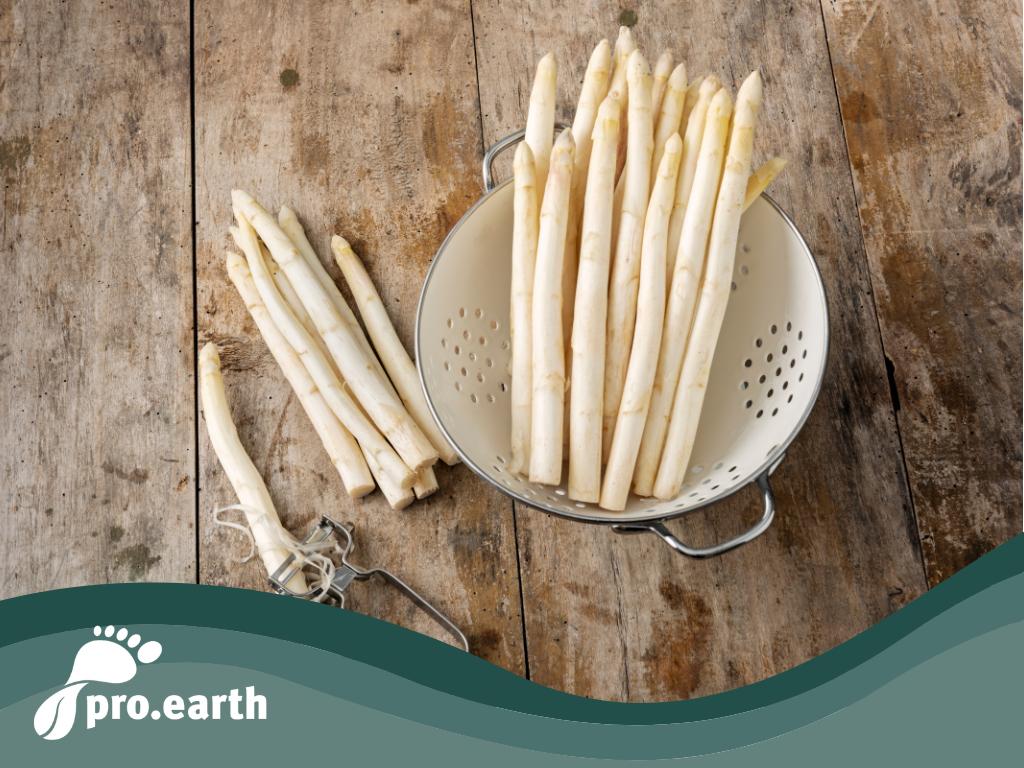The whole world is jinxed - Veronika, the asparagus is growing!!!

Even the great Comedian Harmonists found it hard to resist its charms and everything it entails - we completely understand.
It's a crucial question - green or white asparagus?
Each has its own areas of application and advantages, although the green one impresses us with its uncomplicated nature, there are definitely menus that the white one can take to another level.
It makes its grand entrance every year, because after the long winter full of stock, this freshness, this lightness is an inspiring start to the culinary year, which, like the church year, does not have to be based on the Julian calendar from our point of view - with no less sacred content.
But what are the differences between the varieties, when do we use which ones and what should we pay attention to? We would like to give it the space it deserves and even dedicate a small focus to it.
So here is the first part of our little asparagus 101:
Of elegance and restraint or "Of white asparagus"
It should be noted in advance that we owe its existence to a coincidence. Around 1760, people came up with the idea of covering the asparagus to store heat, which made it paler and milder. White asparagus is still cultivated in this way today.
Cultivation: White asparagus grows underground, surrounded by mounds of earth. This means it receives no sunlight until it is cut. This prevents the development of chlorophyll, a green plant pigment.
Growing white asparagus is therefore quite laborious - not only because it takes years to harvest, but also because of the methods used to help the asparagus grow. Some farmers heat their fields, but most use plastic sheeting to warm the soil. This is also important to protect the white asparagus from the sun and prevent it from discoloring as soon as the spears emerge from the ground.
We always advise, but especially here, to pay attention to organic cultivation. 💚
In large cultivation areas, covering the fields is tantamount to sealing the soil and causes massive damage to the bee population.
Taste: Mild, delicate, the ideal accompaniment to rich dishes. This is probably the reason why it is so often served with heavy sauces. Personally, I think its charm lies primarily in its texture, although this depends to a large extent on the care with which it is cleaned and peeled.






